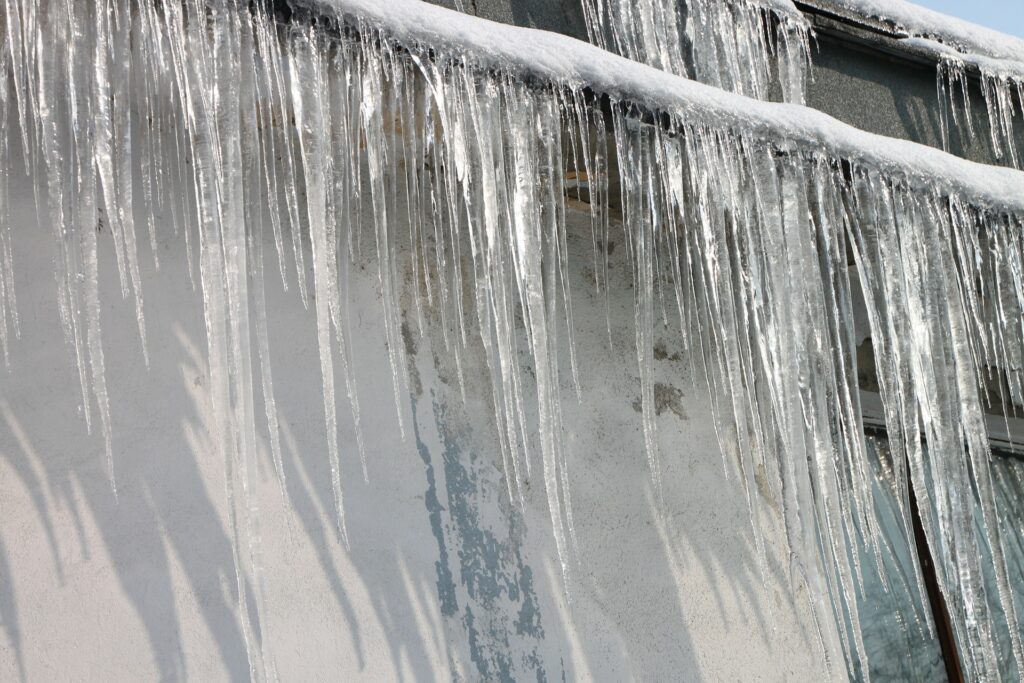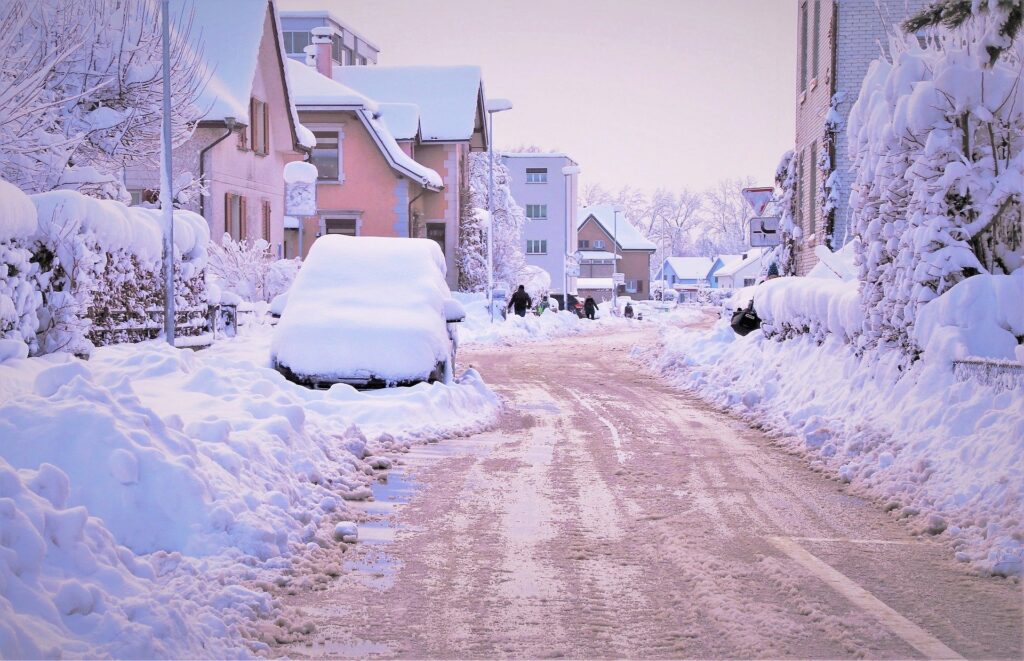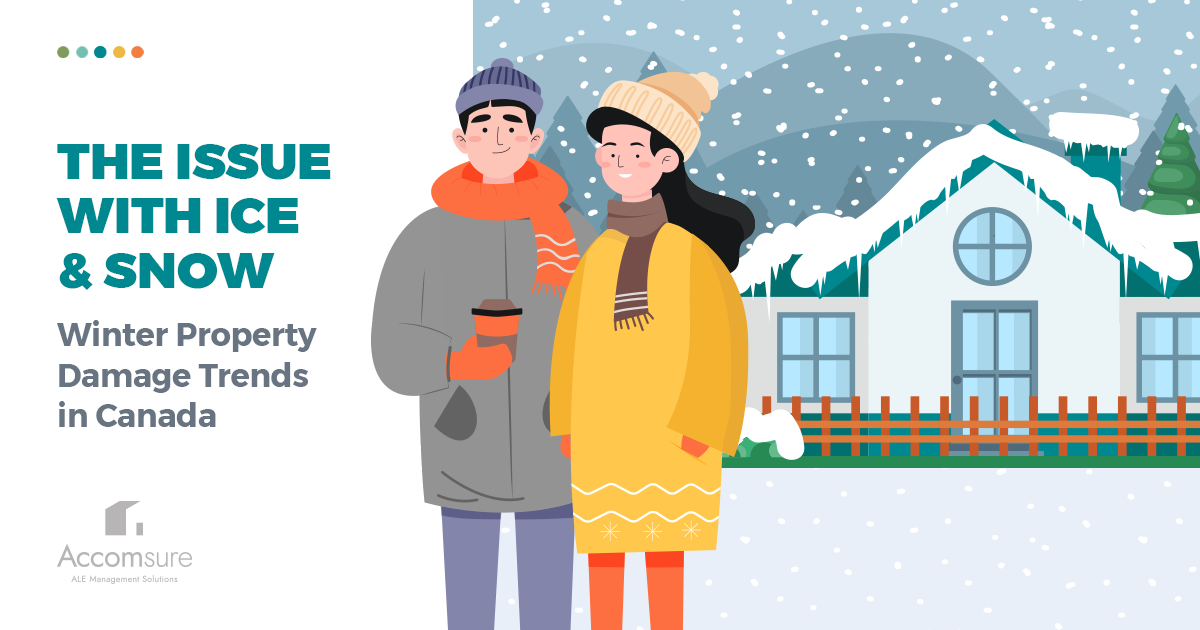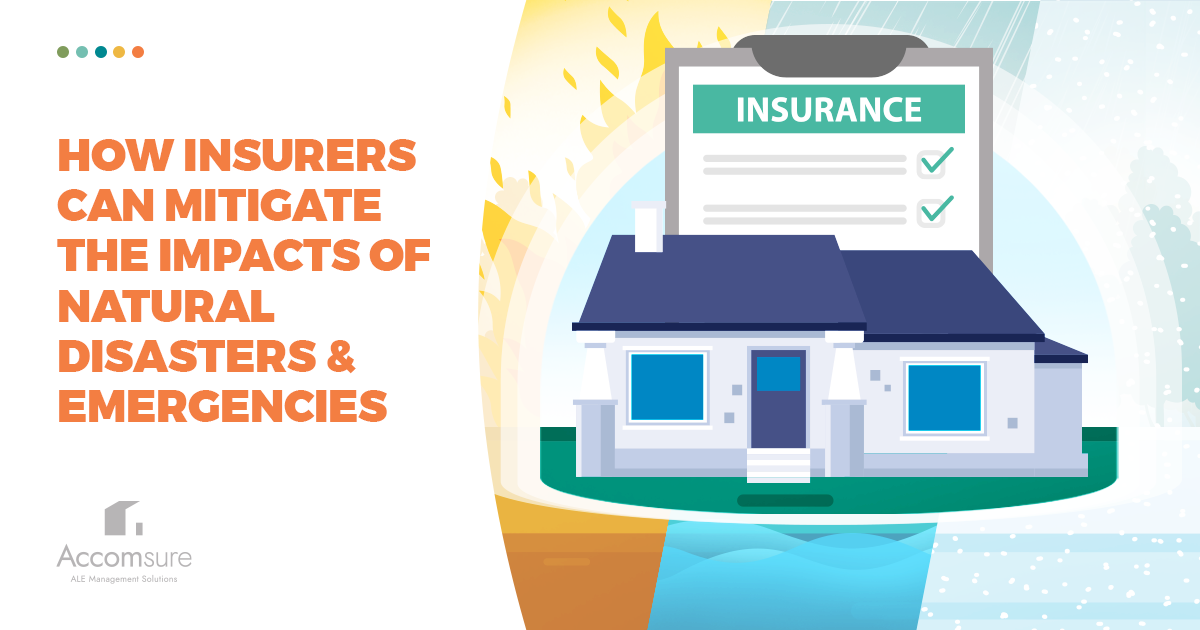Canadians are no strangers to harsh winter weather! Heavy snowfalls and variable temperatures with constant freezing and thawing patterns are no surprise to Canadians when winter rolls around. That’s why winter is one of the worst seasons for property damage in Canada. This type of weather is particularly damaging to homes because it can lead to ice damming and snow buildup.
In this article, we’re breaking down each of these winter property damage trends, their effects on homes, how they impact the home insurance industry, and how policyholders can prevent damage to their homes in winter.
Ice Damming

Ice damming refers to when ice accumulates at the edge of a roof and prevents melting snow from draining off the roof. When water becomes trapped on the roof, it then leaks through the shingles causing damage to the ceiling, walls, and insulation of a house.
Ice dams occur when there is a combination of snow and temperatures both above and below freezing. This causes some of the snow to melt, flow down the roof, and then freeze, thereby forming the ice dam.
Effects of Ice Damming
If policyholders do not monitor and address their ice dams, they could face serious damage to their homes! Ice dams are particularly troublesome for homes because the leaking water can lead to the growth of mould and mildew.
Ice dams can also cause significant damage to the structure including dampening and possibly decaying of the structural framing of a roof. This would make the home dangerous to live in and could leave your policyholders without a place to stay.
Ice Damming By the Numbers
Although there are no documented statistics regarding the number of homes that are affected by ice dams, they can be a common concern in the right conditions.
Here are the factors that increase the risk of ice dams forming:
- Ice dams can form with as little as 1 inch of snow under the right conditions.
- Snowfalls of 6 inches or more create the greatest risk of ice dams forming.
- Temperatures of 0°C or higher will cause snow to melt more quickly and refreeze lower on the roof.
Ice Damming Damage Prevention
Ice damming is a problem because it can cause serious damage to a policyholder’s home. In some severe instances, this may force them to move out of their home. This phenomenon is also a concern to adjusters and insurance companies because ice damming can lead to costly insurance claims and an increased workload. So what can your policyholders do to mitigate their risk?
Here are a few ways policyholders can prevent ice damming damage:
- Get a roof inspection to ensure their attic is well-ventilated.
- Clean eavestroughs regularly so melting snow can flow more easily.
- Immediately dry portions of the house that are wet to prevent mould and mildew from forming.
- Remove snow from their roof when it accumulates in above-freezing temperatures.
- In emergency situations, make channels through the ice dam to help water drain from the roof.
- Ensure their ceilings are air-tight.
- Increase ceiling or roof insulation to reduce heat loss.
Nobody wants their homes to become damaged, especially if the damage could become a safety risk for their family. Share these tips with your policyholders so they are informed on the best ways to prevent damage to their homes! This could help reduce your workload and claims and also help your policyholders keep their homes in good condition and avoid health and safety hazards and displacement.
Snow Buildup

The next winter home damage risk we’ll discuss is snow buildup. Over the course of a long, snowy Canadian winter, snow can create massive drifts and piles that can be very damaging to policyholder homes!
Effects of Snow Buildup
There are several different reasons that snow buildup is a problem: (1) it can lead to foundation issues, (2) it can cause roof damage, (3) it can result in flooding. We’ll discuss each of these effects of snow buildup in the sections below.
Foundation Issues
Concrete is porous, which means that melting snow can lead to moisture slowing seeping into the foundation of houses. When this moisture then freezes, it will expand slightly and start to form small cracks that gradually increase in size each winter.
Roof Damage
Snow can actually be great for policyholders because it can add an extra layer of insulation to their roofs. However, in severe cases, too much snow and ice could cause roofs (especially flat roofs) to collapse. We also discussed how snow buildup on a roof could lead to ice damming in the section above.
Flooding
Sometimes snow buildup can be most damaging when temperatures start to rise! Melting snow can leak through cracks in the foundation of a house and cause flooding in the basement. As we discussed above, the cracks in a house’s foundation will grow larger over time. This means that the flooding problem will also get worse if this problem is not addressed.
Snow Buildup by the Numbers
Like ice damming, the statistics regarding snow buildup and property damage are also very slim. However, this is not to say that snow buildup is not a serious problem! Weather patterns in Canada are constantly changing and some winters may be much more damaging to houses than others. The greater the amount of snowfall in a given winter, the greater the odds of property damage due to snow buildup.
For example, most roof designs are capable of handling 20-40 lbs of snow per square foot. However, packed snow and ice of around 12” of depth can easily overload most roofs. This means that a particularly snowy winter would absolutely increase the risk of roof damage and other effects of snow buildup.
Snow Buildup Damage Prevention
There are many ways that policyholders can reduce or even prevent property damage caused by snow buildup. Share the following tips with your policyholders to help them reduce their risks of snow buildup-related damage to their homes:
- Plow or blow snow away from foundation walls.
- Clear eavestroughs and ensure they are angled to direct water flow away from the house.
- Ensure the ground slope around the home slopes away from the house to avoid melting snow flowing towards the foundation.
- Repair and seal the foundation by patching cracks with concrete caulk and adding masonry sealer to the surface.
Extreme Weather Drives Up Home Insurance Claims
As we discussed in this article, a particularly harsh Canadian winter can result in a huge increase in home insurance claims. For example, extreme weather such as snowstorms resulted in $1.3 billion in insured damage in 2019 (Insurance Bureau of Canada). This leaves adjusters with massive workloads and difficulty staying on top of claims, let alone going above and beyond for policyholders!
In some situations, damage due to severe winter weather conditions may result in your policyholders being unable to stay in their homes. These claims are often much more complex and require more work on your behalf. Accomsure is here to support you with these claims.
At Accomsure, we can take care of your policyholder’s immediate need of finding temporary accommodation within their policy limits to free up your time to focus on their claim. We also take on all client communication to help you provide the best possible experience for your client in their time of need.
Visit our website, send us an email, or call us at 1.888.212.5815 to submit a claim.




